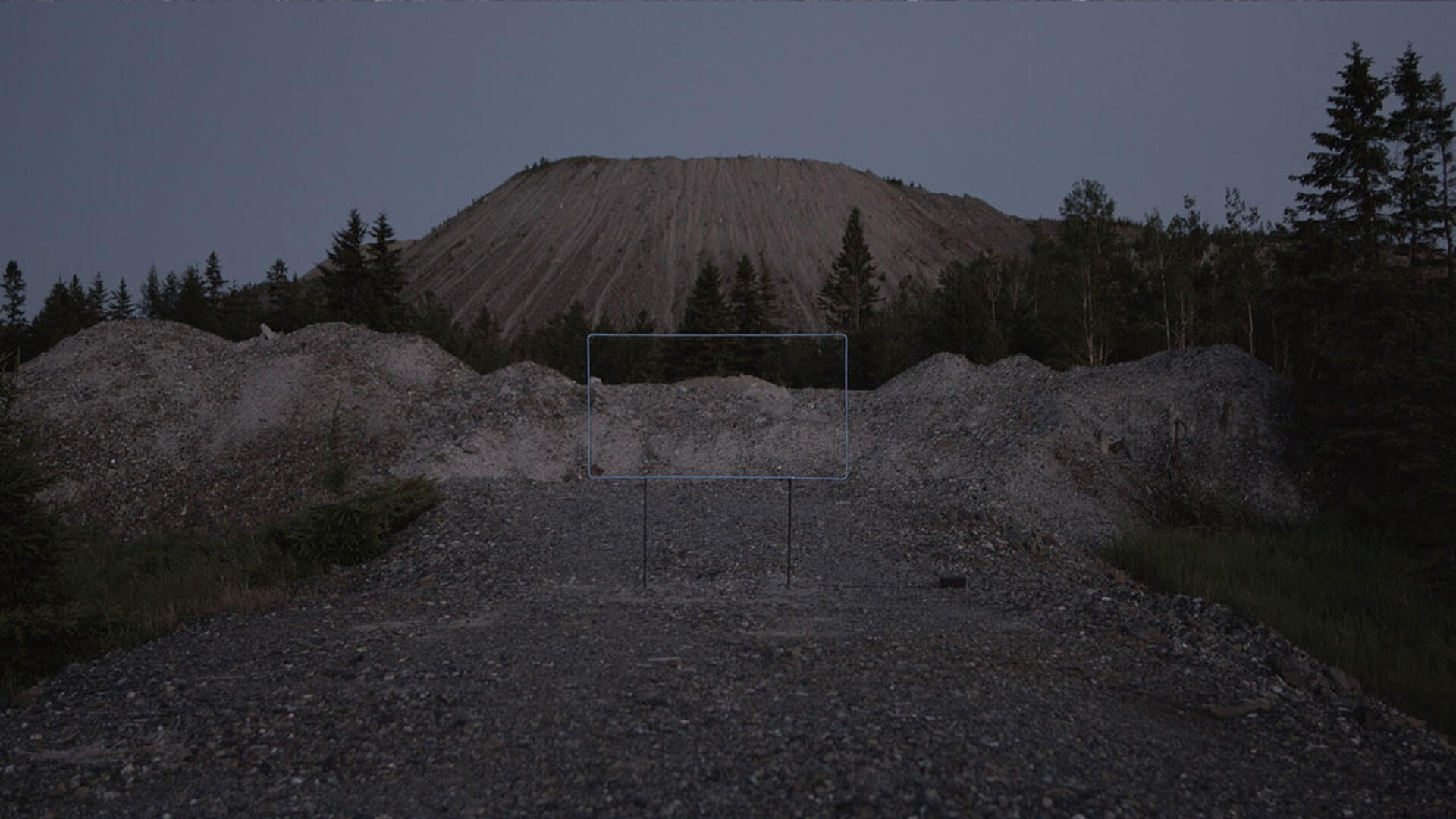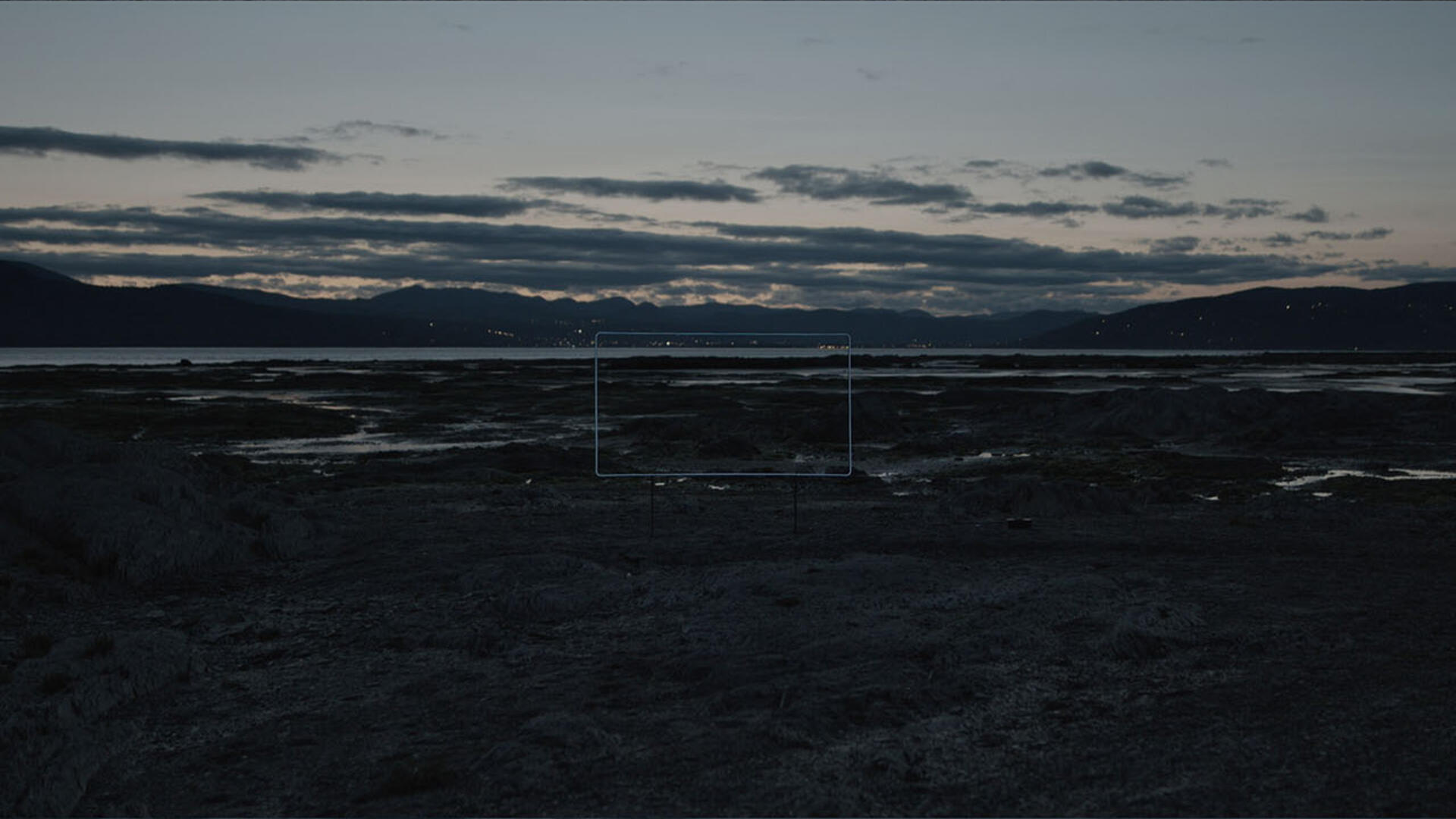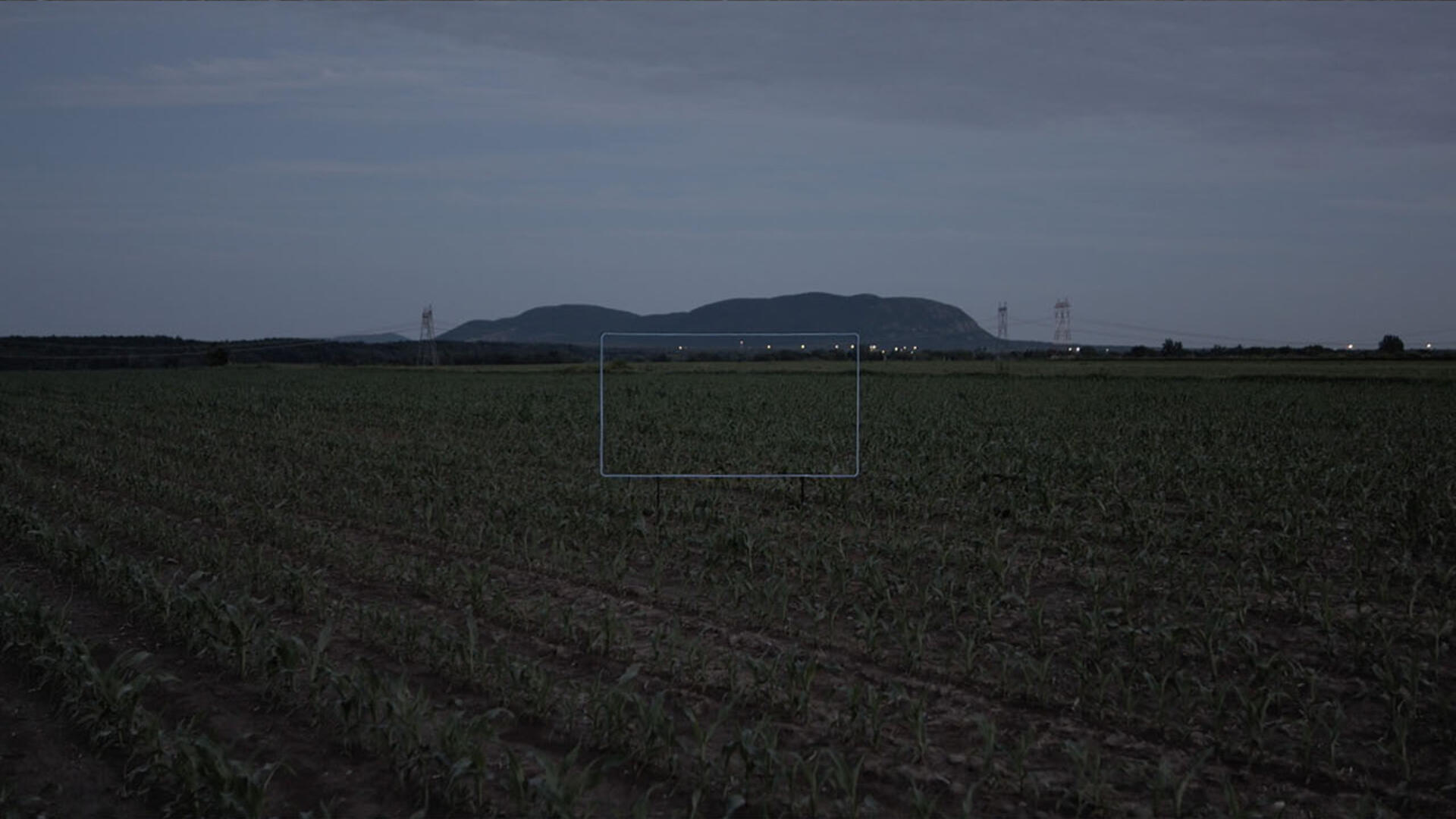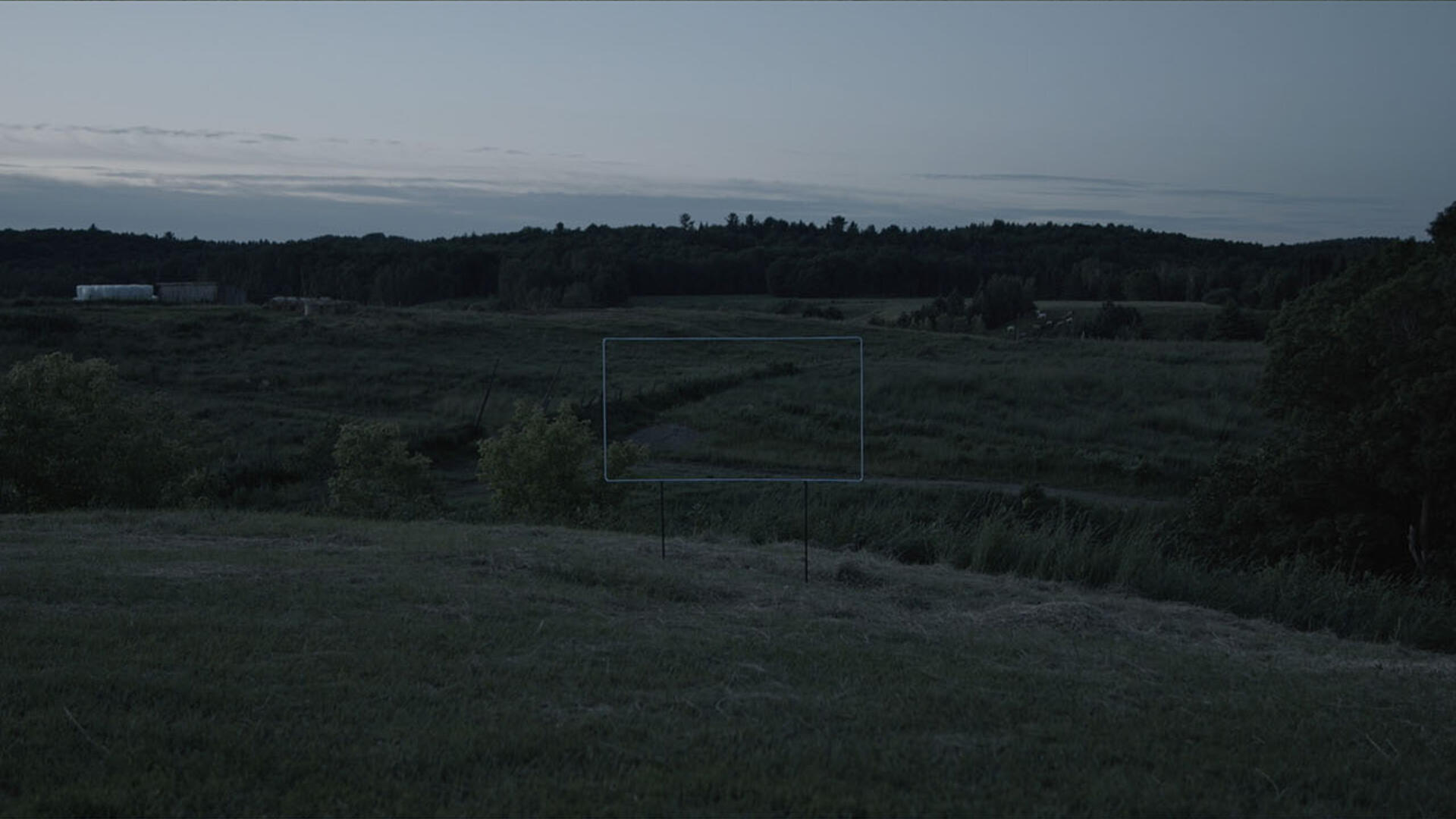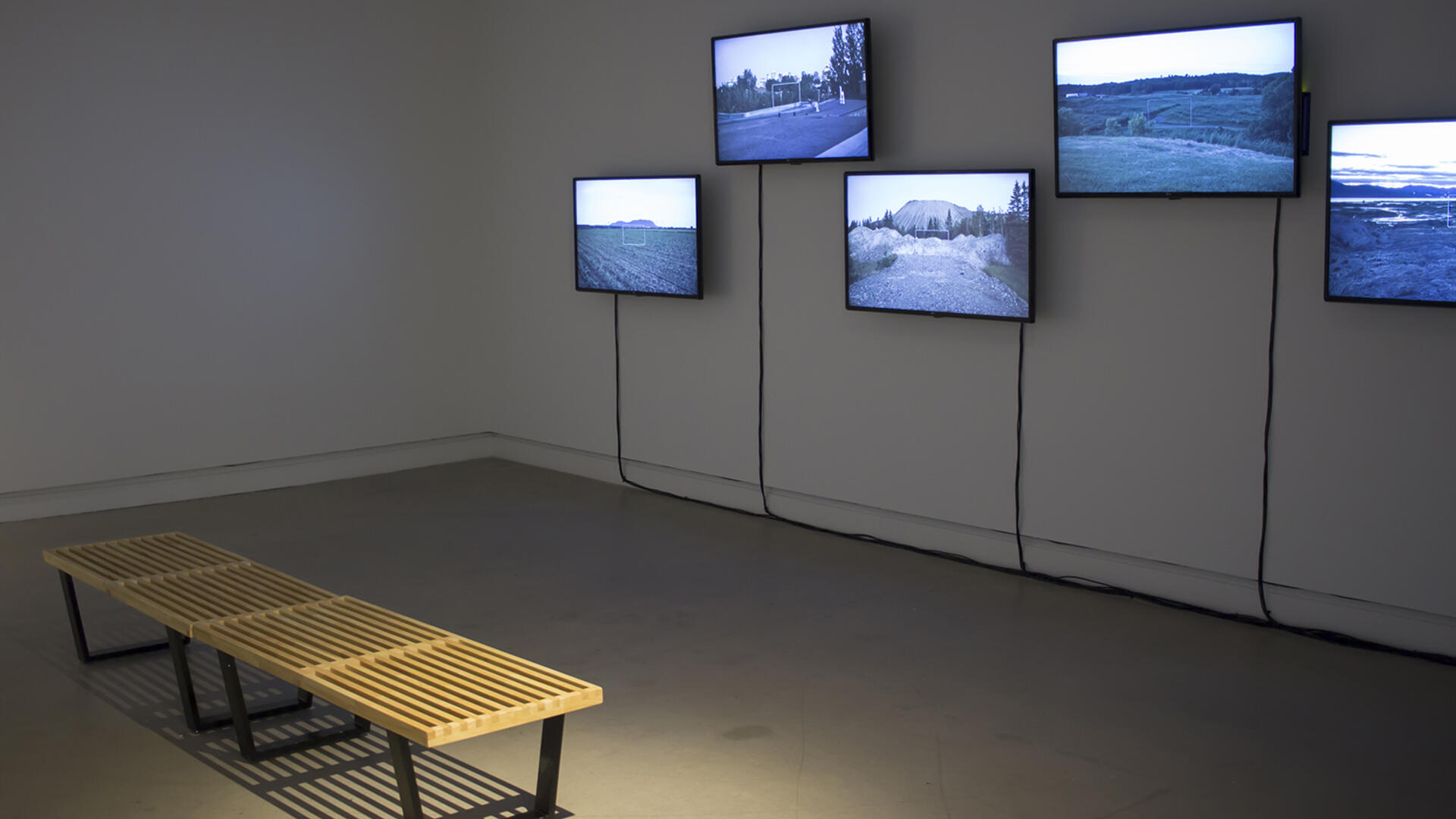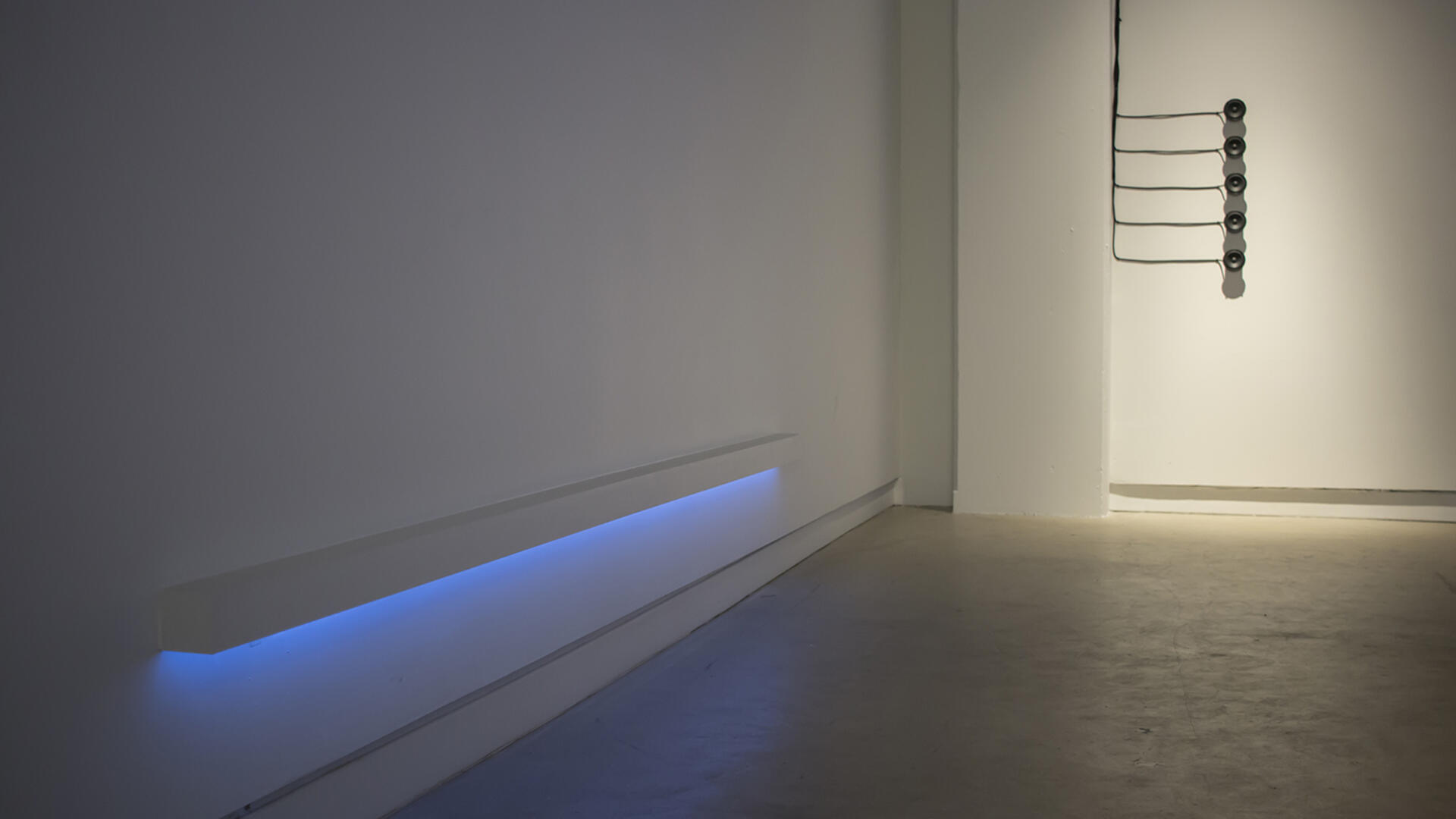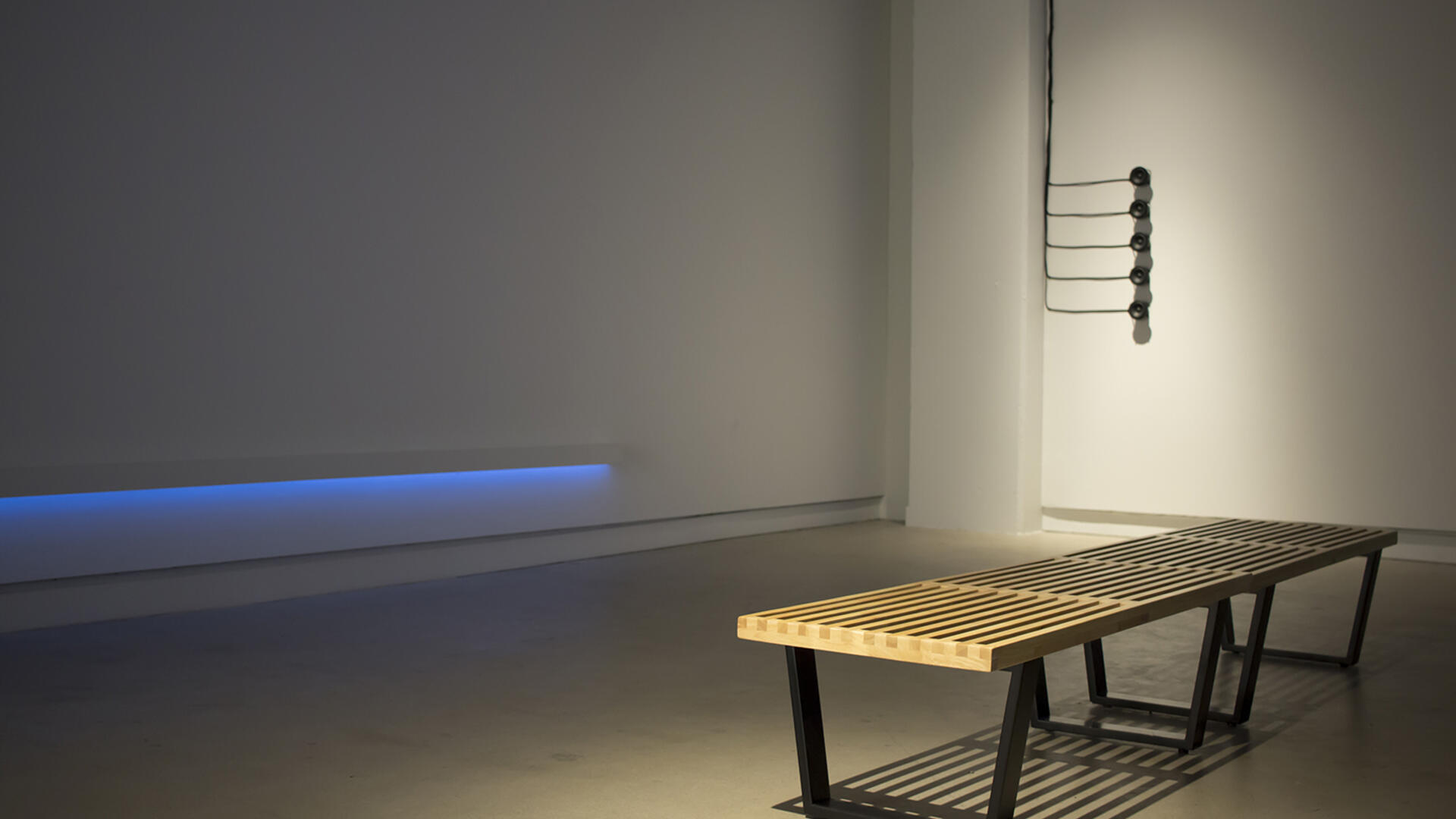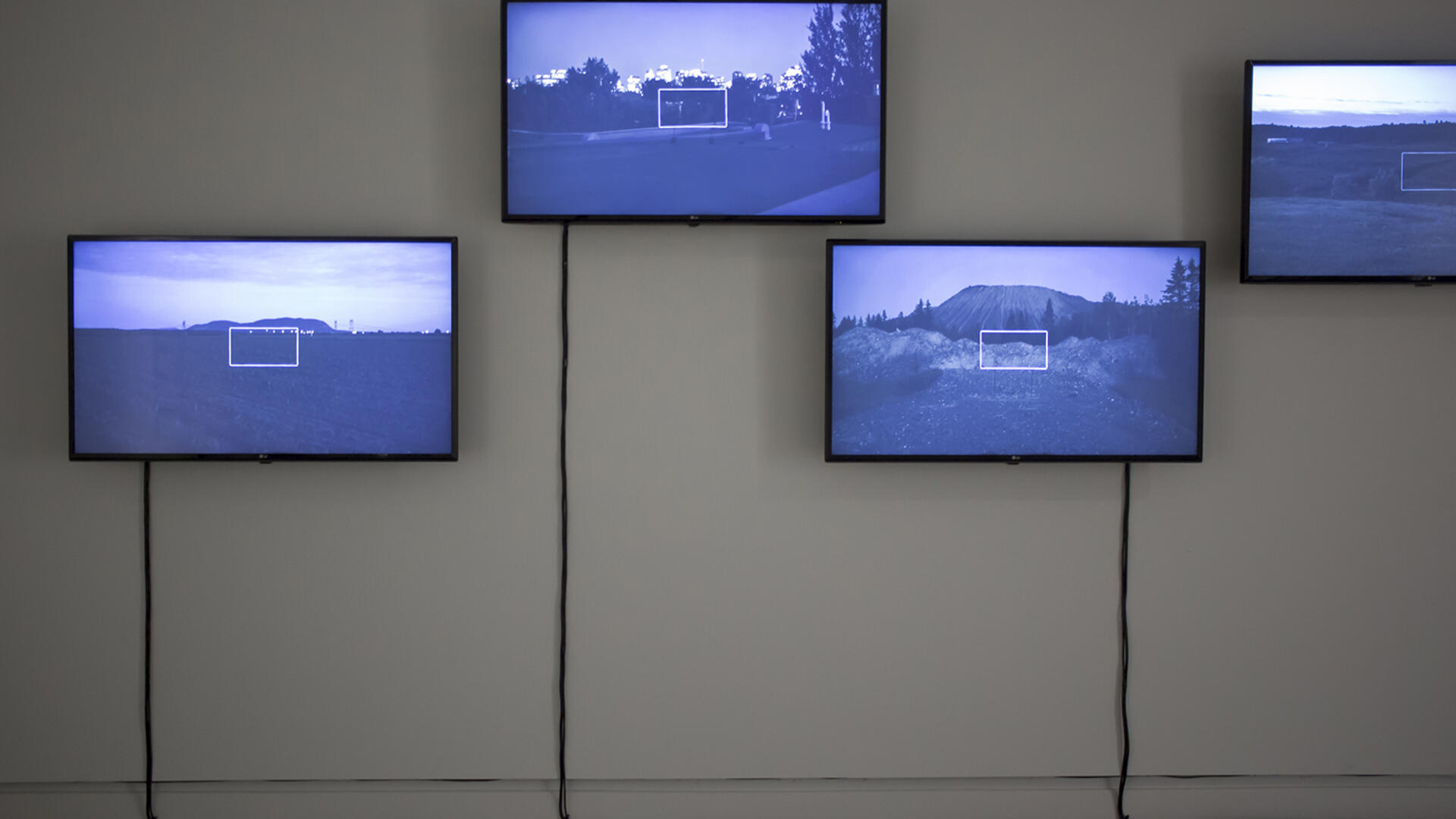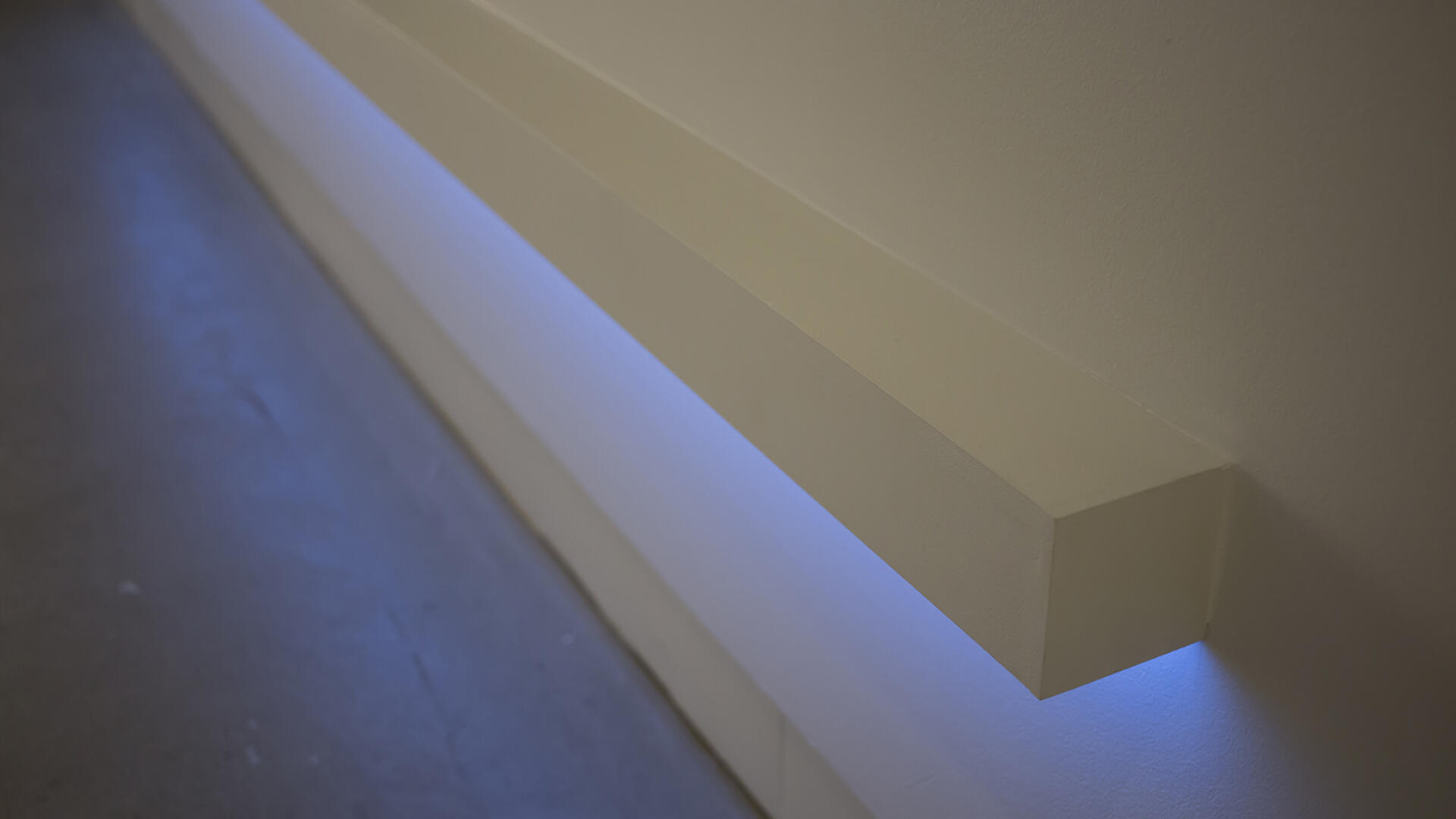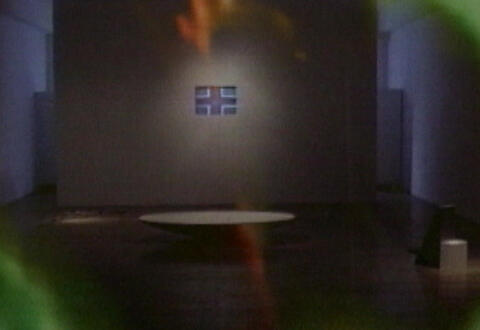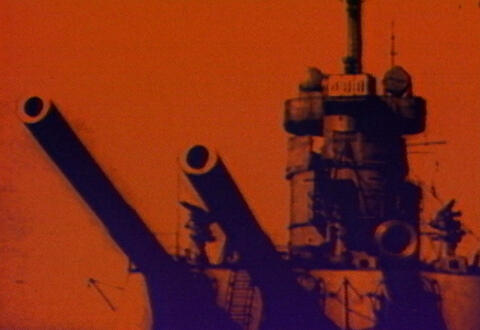Screens
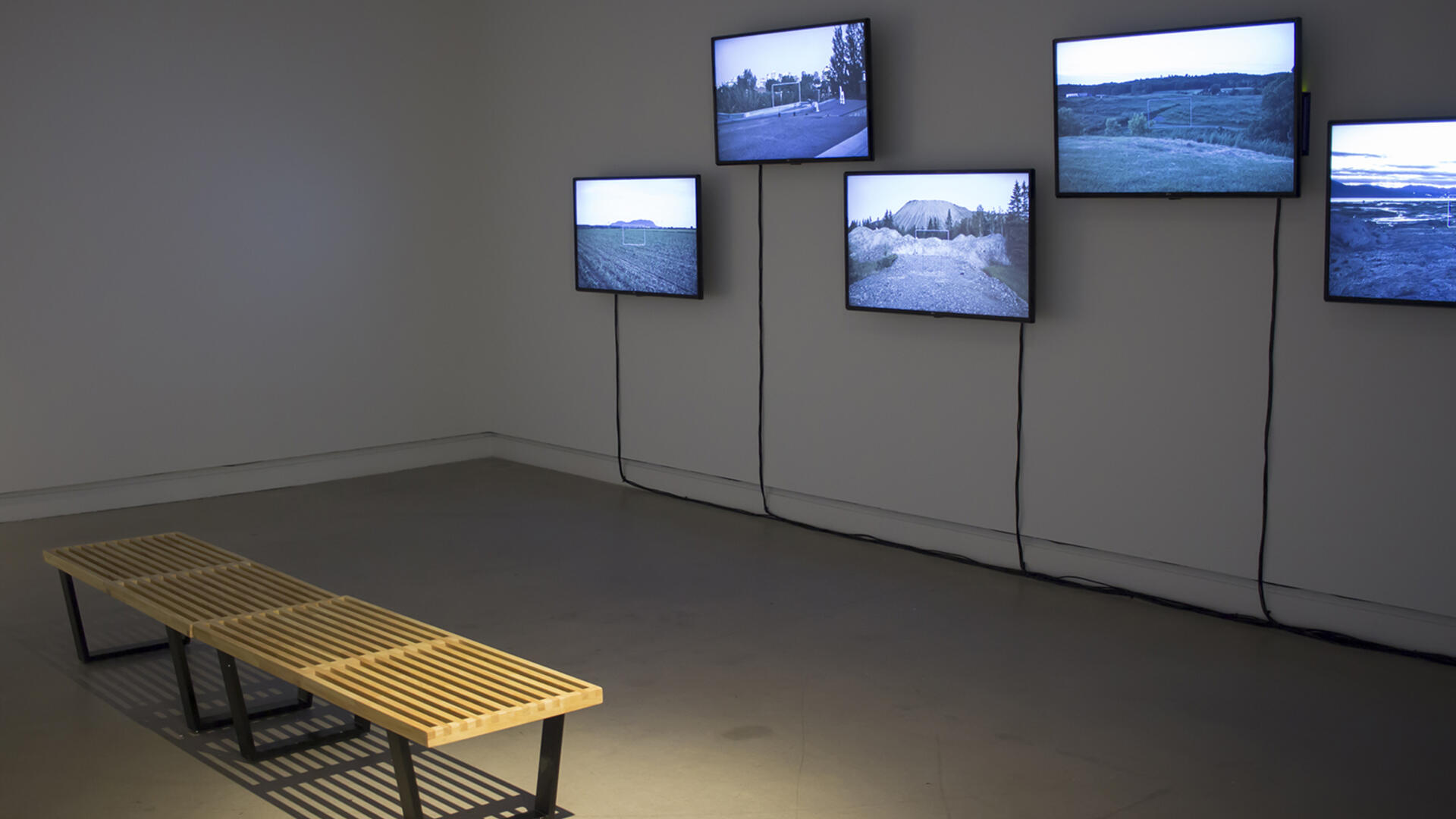
This project aims to illustrate the connections between cinema and the imaginary of death. In 2015, the artist went to the burial sites of 5 filmmakers in order to record the sounds surrounding their tombstones. These sound recordings were then filtered into an audio-reactive light wire in order create unpredictable flicker patterns. This wire was also attached to a rectangular frame which was installed in 5 sites which have formerly served as filming locations in the movies of the selected directors. These interventions in the landscape were, each time, documented using a video camera during sunset.
The resulting shots are 40 minutes long, which is long enough to, at first, see the complete setup planted in the landscape, and then, while the image darkens progressively, see it disappearing and morphing into a rectangle of light floating in the environment. This rectangle of light may, by its shape, evoke the archetypal figure of the cinema screen, or, in another way, recall the AF points visible in many photo or video cameras. The flickering effect of light may also evoke one of the fundamental principles of cinema: the pulsating light creating the illusion of movement.
Technical information
Documentation
The selected filmmakers and locations:
-Michel Brault, who is buried at Mont Saint-Hilaire. Shot taken in Montréal, on the roof of an apartment building where he shot several scenes of Les ordres in 1974.
-Gilles Carle, buried in Montréal. Shot taken at Saint-Didace, on the farm where he shot The True Nature of Bernadette, in 1972.
-Gilles Groulx, buried at l’île Perrot. Shot taken at Saint-Charles-sur- Richelieu, in a field where several scenes from the 1964 film Le chat dans le sac were shot.
-Claude Jutra, buried in Amos. Shot taken at Black Lake, the town in which he filmed Mon oncle Antoine in 1971.
-Pierre Perreault, buried in Montréal. Shot taken on l’Isle-aux- Coudres, where Pour la suite du monde was filmed in 1963.
Technical requirements:
The five sequences are presented on monitors in a synchronized loop. These can be attached to the walls of the exhibition space, side by side to form a line of screens. A luminous bar created by the artist, placed on the floor, completes the installation (optional).
Materials required:
- 5 HD monitors (1920/1080), minimum size 32 inches
- Playback devices (computers, dvd players, etc.)
- Sync system for images screened
- Speakers
Landscape, filmmakers, death, light, sound






